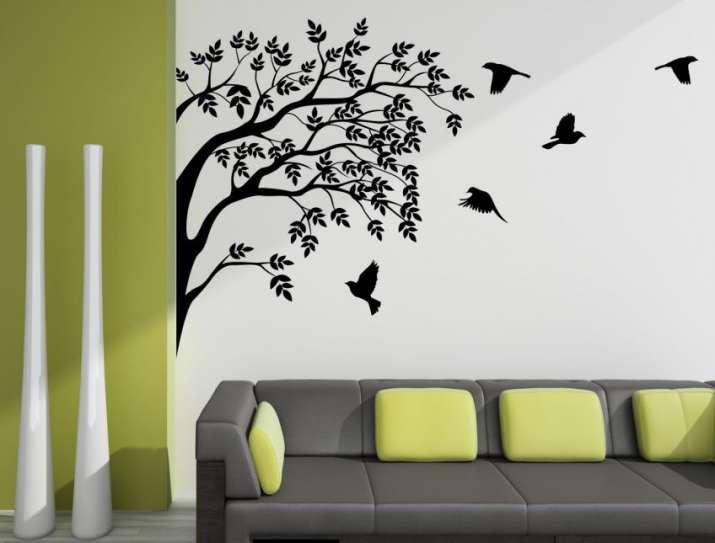Allied Market Research recently published a report, titled, “Wall Art Market by Type (Modern, Abstract, Others), by Price Point (Premium, Mass), by Sales Channel (Auction Houses, Specialty Stores, E-commerce, Others): Global Opportunity Analysis and Industry Forecast, 2021-2031.” As per the report, the global wall art industry was estimated at $20.40billion in 2021, and is set to reach $34.77 billion by 2031, growing at a CAGR of 5.6% from 2022 to 2031. The report offers a detailed analysis of changing market trends, top segments, key investment pockets, value chains, regional landscapes, and competitive scenarios.
Drivers, restraints, and opportunities
Rise in disposable income, increase in the global population, and thriving real estate sector drive the growth of the global wall art market. A massive increment in the number of households due to urbanization will promote global market growth trends. Growing demand for modern and abstract wall art across the commercial and residential sectors is predicted to create new growth opportunities for the global market. However, fluctuations in raw material costs can put brakes on the global market expansion.
Covid-19 scenario:
- The COVID-19 pandemic adversely impacted the growth of the global wall art market due to supply chain disruption, lack of raw material availability, and restrictions on commodity transit.
- Delay at national borders created obstacles tothe export and supply of wall art across the globe during the COVID-19 pandemic.
The abstract segment to dominate the global market in terms of revenue by 2031
Based on the type, the abstract segment contributed to the highest market share in 2021, accounting for nearly half of the global wall art market share.Reportedly, this segment is predicted to contribute majorly toward overall market share by 2031. The growth can be attributed to the attraction of youths toward abstract arts and paintings. However, the modern segment is predicted to register the fastest CAGR of nearly 6.0% from 2022 to 2031. The growth of the segment can be credited to the rise in a number of customers preferring modern paintings with a contemporary aesthetic value.
The mass segment to hold the major market share from2022 to 2031
On basis of the price point, the mass segment contributed to the highest market share in 2021, accounting for aroundthree-fifthsof the global wall art market share.Reportedly, this segment is predicted to contribute majorly towardan overall market share in 2031. The segmental growth over the forecast timeline can be attributed to a rise in preference for mass art productsfrom consumers belonging tothe middle-income group population.However, the premium segment is anticipated to record the highest CAGR of 6.1% over the forecast period. The growth of the segment over the forecast period can be credited toa surge in customer spending on premium wall art due to a rise in disposable income and improved lifestyles.
The specialty storessegment to dominate the global marketby 2031
In terms of the sales channel, the specialty stores segment contributed to the highest market share in 2021, accounting for nearlyhalfof the global wall art market share.Reportedly, this segment is predicted to contribute majorly toward an overall market share in 2031. The expansion of this segment over the forecast timeline is due toa rise in the sale of wall art products in specialty stores and a growing trend of customers towardphysical examination of the products before making a purchase.However, the E-commercesegment is predicted to register the fastest CAGR of nearly 6.2% from 2022 to 2031. The segmental surge can be owing to the prominent use of smartphones and mobile equipment along with alteringthe shopping habits of millennials. The report also includes other segments such as auction houses and others.
North America to retain global market domination over 2022-2031
By Region,North America contributed notablytoward an overall market share in 2021, and is projected to continue its dominance during the forecast period. The region accounted for nearly two-fifths of the global wall artmarketin 2021. The growth of the market in the region over the forecast timespan can be credited to massive consumer demand forartisan-made home décor items including sculptures, drawings, and paintings in the U.S. However, the Asia-Pacific region is anticipated to record the fastest CAGR of 7.1% from 2022 to 2031. The growth of the regional market over the forecast period can be attributed to the high spending of the people of the region for maintaining the attractiveness of their houses. Furthermore, consumers in the sub-continent are purchasing fully furnished houses and require wall décor products to decorate their houses. This has created a demand for wall art in the sub-continent, thereby driving the growth of the wall art market in the Asia-Pacific zone. The report also analyzes other segments including LAMEA and Europe.





